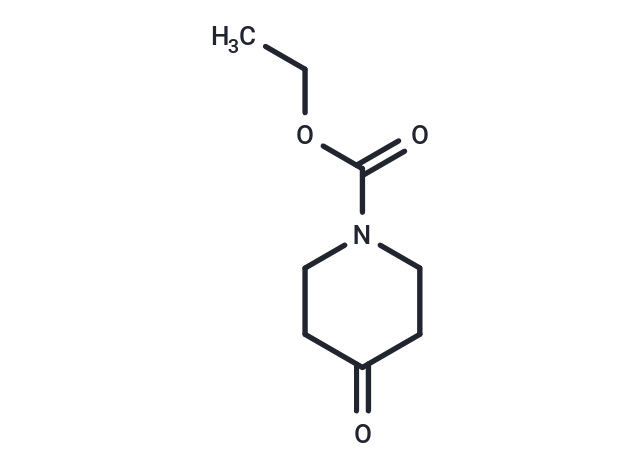Shopping Cart
Remove All Your shopping cart is currently empty
Your shopping cart is currently empty
N-Carbethoxy-4-piperidone is an aminopyrimidine derivative, compositions containing them and there served as pharmaceuticals.

| Pack Size | Price | USA Warehouse | Global Warehouse | Quantity |
|---|---|---|---|---|
| 1 g | $29 | - | In Stock | |
| 1 mL x 10 mM (in DMSO) | $29 | In Stock | In Stock |
| Description | N-Carbethoxy-4-piperidone is an aminopyrimidine derivative, compositions containing them and there served as pharmaceuticals. |
| Kinase Assay | A crude cell-free extract is isolated from LI 210 cells in culture by suspension of the cells in a given volume of 0.05mol/LTris-HCl buffer, pH 7.4, and sonic extraction with a Biosonik at 70% maximal output for 30 sec. The supernatant is collected after centrifugation at 105,000 × g for 60 min (4°C) in a Model L Spinco ultracentrifuge. The final protein concentration of the cell-free extracts is approximately 3 mg/mL. The extracts are used as the source of enzymes. Ribonucleotide reductase activity is measured. A unit of enzyme is defined as the amount that catalyzed dCMP synthesis at a rate of 1 mμmole/hr. The assay systems for the measurement of pyrimidine nucleoside (CR) and deoxynucleoside (TdR, CdR) kinases are essentially those described by Chu and Fischer. However, reactions are terminated by heating for 2 min in a boiling water bath, and the phosphorylated derivatives are isolated according to the method of Bach. Fifty-jul aliquots are applied to 1-inch discs of diethylaminoethyl paper, which are then placed in counting vials and eluted with 0.5 mL of 0.5 mol/LPCA. After 1 hr, 12 mL of Diotol are added, and the radioactivity is determined. |
| Molecular Weight | 171.19 |
| Formula | C8H13NO3 |
| Cas No. | 29976-53-2 |
| Smiles | CCOC(=O)N1CCC(=O)CC1 |
| Relative Density. | 1.135g/mLat 25°C(lit.) |
| Color | Transparent |
| Appearance | Liquid |
| Storage | Powder: -20°C for 3 years | In solvent: -80°C for 1 year | Shipping with blue ice/Shipping at ambient temperature. | |||||||||||||||||||||||||||||||||||
| Solubility Information | DMSO: 60 mg/mL (350.49 mM), Sonication is recommended. | |||||||||||||||||||||||||||||||||||
Solution Preparation Table | ||||||||||||||||||||||||||||||||||||
DMSO
| ||||||||||||||||||||||||||||||||||||
| Size | Quantity | Unit Price | Amount | Operation |
|---|

Copyright © 2015-2026 TargetMol Chemicals Inc. All Rights Reserved.